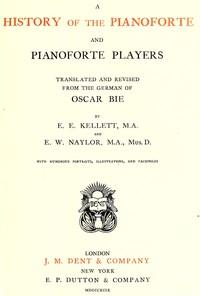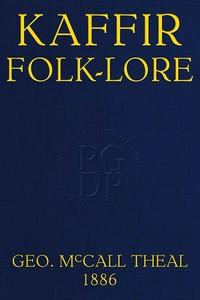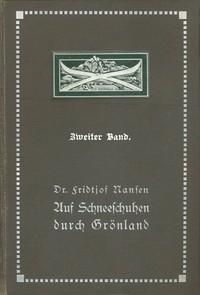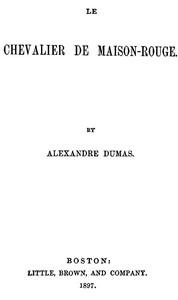Read this ebook for free! No credit card needed, absolutely nothing to pay.
Words: 46940 in 27 pages
This is an ebook sharing website. You can read the uploaded ebooks for free here. No credit cards needed, nothing to pay. If you want to own a digital copy of the ebook, or want to read offline with your favorite ebook-reader, then you can choose to buy and download the ebook.
KAFFIR FOLK.
In South Africa the word Kaffir is often used in a general way to signify any black native who is not the descendant of an imported slave, but on the eastern frontier of the Cape Colony the term is usually restricted to a member of the Amaxosa tribe. It is from individuals of this tribe that the following stories have been collected.
Europeans have designated these people Kaffirs ever since the discovery of the country, though they themselves cannot even pronounce the word, as the English sound of the letter r is wanting in their language. R in Kaffir words, as now written, represents the same guttural sound as g does in Dutch, or the Scotch sound of ch in loch; thus Rarabe is pronounced Khah-khah-bay. They have no word by which to signify the whole race, but each tribe has its own title, which is usually the name of its first great chief, with the plural prefix Ama or Aba.
A very large portion of South Africa is occupied by people of this race. All along the eastern coast, as far south as the Great Fish River, the country is thickly populated with Kaffir tribes. On the other side of the mountains, the Bechuanas, their near kindred, are found stretching almost across to the Atlantic shore, from the heart of the continent southward to the Orange River.
The country lying between the present colonies of the Cape and Natal was first explored by Europeans in the year 1688, and was then found to be occupied by four great tribes,--the Amampondomsi, the Amampondo, the Abatembu, and the Amaxosa,--who formed nations as distinct from each other as are the French and the Italians. Their language was the same, and their laws and customs varied very slightly; but in all that respected government they were absolutely independent of one another. It has since been ascertained that the tribes further northward do not differ materially from these.
The Amaxosa were the farthest to the southward in 1688, as they have been ever since. On the coast they had then reached the Keiskama River, and there is good reason to believe that inland their outposts extended westward as far as the site of the present village of Somerset East. They were thus in contact with Hottentot tribes along an extended line, and an amalgamation of the two races had probably already commenced. It is certain that during the latter half of the last century a great many Hottentots were incorporated with the Amaxosa.
The mode of incorporation was in most instances a selection of Hottentot females after the destruction of their clan in war; but in at least one case a Hottentot tribe became gradually a Kaffir clan by mixture of blood through adoption of Kaffir refugees. The people of this tribe, a pure Hottentot one in 1689 and then called the Gqunaqua, were found by a traveller a century later to resemble Kaffirs more than Hottentots in appearance, and, except a few families, they are now undistinguishable from other members of the Amaxosa. Their original language has been lost, but their old tribal title is yet retained in the Kaffir form Amagqunukwebe.
This large admixture of Hottentot blood has not affected the mode of government or the general customs of the Amaxosa, as is seen on comparing them with other tribes to the north; but it has affected their personal appearance and their language. Many words in use by the women, though appearing in a Kaffir form, can be traced to Hottentot roots. Owing to this, their traditional stories may have been modified to some, though not to any great, extent
In a condition independent of European control, each Kaffir tribe is presided over by a great chief, whose government is, however, but little felt beyond his own immediate clan, each petty division being under a ruler who is in reality nearly independent. The person of a chief is inviolable, and an indignity offered to one of them is considered a crime of the gravest nature. Such offshoots of the ruling house as are not of themselves chiefs are of aristocratic rank, and are exempt from obedience to the laws which govern the commonalty. With regard to the common people, the principle of the law is that they are the property of the rulers, and consequently an offence against any of their persons is atoned for by a fine to the chief. Murder and assaults are punished in this manner. Thus in theory the government is despotic, but in practice it has many checks. The first is the existence of a body of councillors about the person of each chief, whose advice he is compelled to listen to. A second is the custom that a man who can escape from a chief whose enmity he has incurred will be protected by any other with whom he takes refuge, so that an arbitrary or unpopular ruler is in constant danger of losing his followers.
The chief in council makes the law and administers it, but from the courts of the petty chiefs there is an appeal to the head of the tribe. Only two kinds of punishment are known: fines and death. Lawsuits are of frequent occurrence, and many Kaffirs display great ability and remarkable powers of oratory in conducting them. The judges are guided in their proceedings by a recognised common law and by precedents, though some of them are exceedingly venal. They will sit, however, with exemplary patience, for days together, to hear all the details of a case, and, where bribery is impossible, their sentences are usually in accordance with strict justice.
The manner in which the Kaffirs became divided into independent tribes in ancient times is clearly shown by the law of succession to the chieftainship which is in force to the present day. The first wives of a chief are usually the daughters of some of his father's principal retainers; but as he increases in power his alliance is courted by great families, and thus it generally happens that the last of his wives is the highest in rank. Probably she is the daughter of a neighbouring chief, for it is indispensable in her case that the blood of the ruling line should flow in her veins. She is termed the great wife, and her eldest son is the principal heir.
Another of his wives is invested at some period of his life, with the consent of his councillors and friends, with the title of wife of the right hand, and to her eldest son is allotted a portion of the tribe, with which he forms a new clan. The government of this is entrusted to him as soon as he is full grown, so that while his brother is still a child he has opportunities of increasing his power. If he is the abler ruler of the two, war between them follows almost to a certainty as soon as the great heir reaches manhood, and is invested with a separate command. Should peace be maintained, upon the death of his father the son of the right hand acknowledges his brother as superior in rank, but pays him no tribute, nor admits of his right to interfere in any manner with the internal government of the new clan.
Free books android app tbrJar TBR JAR Read Free books online gutenberg
More posts by @FreeBooks

: Nancy first and last by Blanchard Amy Ella Stecher William F William Frederick Illustrator - Love stories; Voyages and travels Juvenile fiction; Young women Juvenile fiction; Families Juvenile fiction; Identity Juvenile fiction


: History of the pianoforte and pianoforte players by Bie Oskar Kellett E E Ernest Edward Translator Naylor Edward W Edward Woodall Translator - Pianists; Piano History








